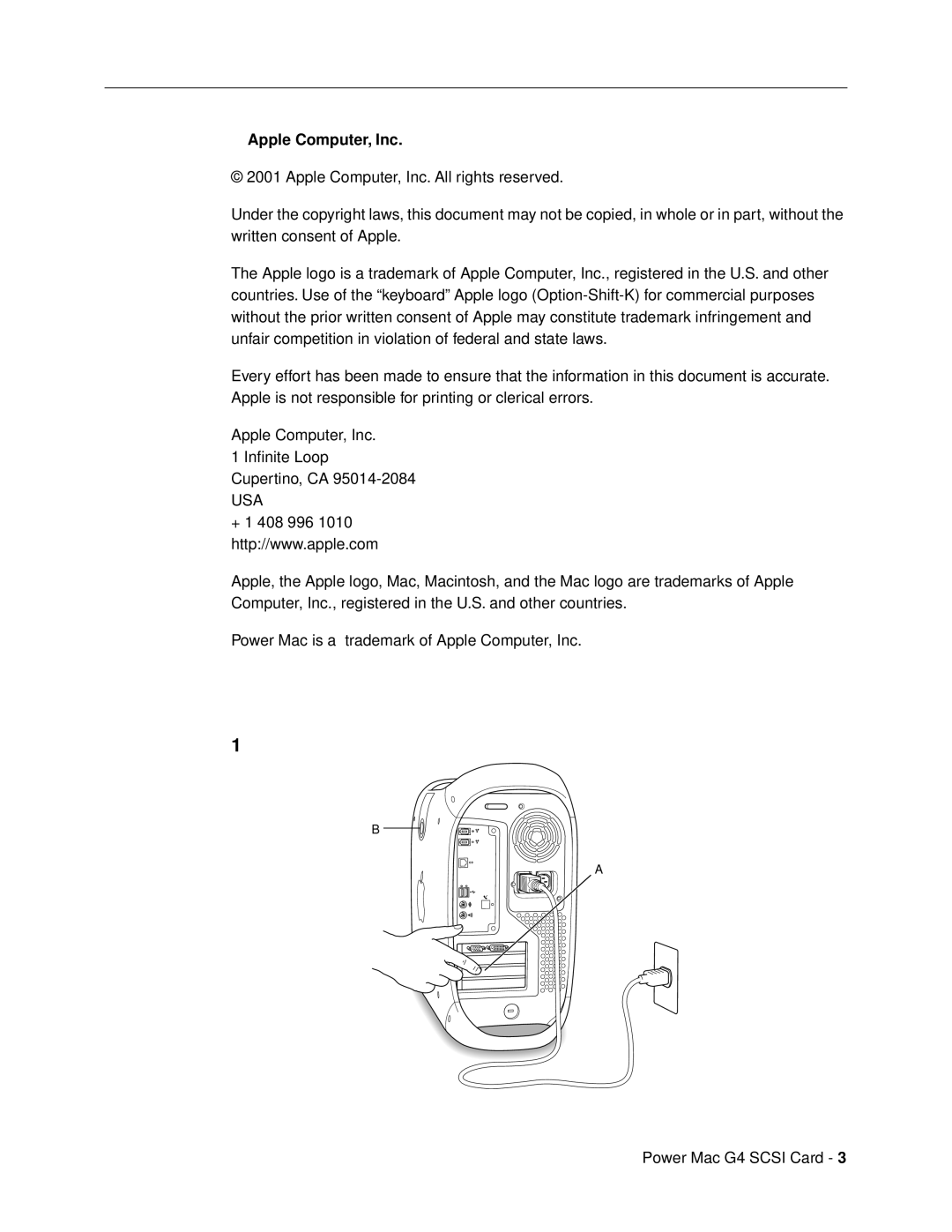SCSI Card specifications
The Apple SCSI Card is a significant expansion card that was designed to extend the capabilities of various Apple Macintosh computers by providing SCSI (Small Computer System Interface) connectivity. Introduced in the late 1980s, this card allowed users to connect a variety of SCSI devices, including hard drives, scanners, and printers, significantly enhancing the functionality of their systems.One of the main features of the Apple SCSI Card is its ability to support multiple SCSI devices. This capability is achieved through SCSI's intrinsic nature of allowing up to seven devices on a single bus. The card utilizes a 50-pin connector to facilitate connections with external SCSI devices, providing a standardized interface that was widely adopted in the computing industry.
The Apple SCSI Card operates at a speed of 5 MB/s, making it suitable for the data transfer needs of the time when it was introduced. Although this speed might seem modest by today’s standards, it was quite adequate for the multimedia applications that were burgeoning in the late 1980s and early 1990s. This speed was particularly beneficial for users who needed to transfer large files such as graphics and video, which were becoming more prevalent in the Macintosh ecosystem.
In terms of compatibility, the Apple SCSI Card was designed to work seamlessly with a variety of Macintosh models, including the Macintosh II series and later models. The installation process was relatively straightforward, allowing users to quickly incorporate it into their systems. Its integration into the operating system was also well-implemented, enabling users to easily manage and configure connected SCSI devices without extensive technical knowledge.
The SCSI architecture allowed users to daisy-chain devices, simplifying the process of adding peripherals as their storage or data needs expanded. This flexibility was a substantial advantage, helping to future-proof many Macintosh setups at the time.
In summary, the Apple SCSI Card was an essential tool for Macintosh users looking to enhance their computer systems with SCSI technology. Its ability to connect multiple devices, impressive data transfer speeds, and broad compatibility with various Mac models established it as a fundamental component in the evolution of computer peripherals, paving the way for more advanced connectivity solutions in the years to come.

